
views
- Thermite is a 1:3 mixture (by mass) of metallic aluminum and iron oxide. It burns at 2,200°C (3,990 °F), producing molten iron, and is often used for welding.[1]
- Making thermite is extremely dangerous. Take safety precautions like wearing a welding mask, fireproof apron, and protective clothing.
- To make thermite, combine powdered iron oxide and aluminum powder in a ceramic container. Insert a magnesium strip into the mixture, light it, and stand back.
- Do not attempt to extinguish burning thermite with water. Let it burn out. Never remove your safety gear when working with thermite.[2]
Safety Precautions
Select an area that’s free of flammable material. Ideally, make thermite in a laboratory equipped with heat screens and ventilation. Making thermite outside is not recommended because wind can carry burning material away from the reaction. Whatever site you choose, make sure there is nothing that can burn within a 4 meter (13.1 ft) radius of the reaction. Make sure that there no metals with low melting points, such as lead, tin, cadmium, or zinc, within a 4 meter (13.1 ft) radius either. Do not make thermite inside your home or garage. Keep children and pets away from the thermite. Never let children do this experiment.
Use ceramic containers rather than metals to minimize fire risk. Since you'll be burning metals, the thermite fire can burn through a lot of substances, including thick metals. Ceramics, such as clay flower pots, can hold the fire without melting. Look online for ceramics labeled as having a high heat point. Remember, thermite burns at 2,200 °C (3,990 °F). Even ceramics can break from excess heat. Stand back once the reaction starts in case the container breaks, spreading burning material.
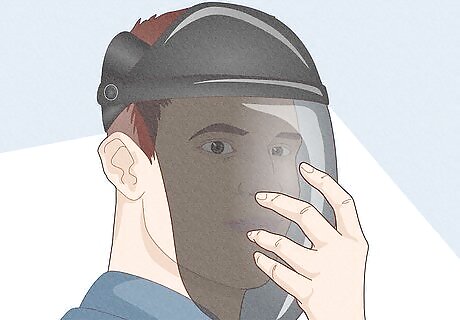
Wear a welding mask to protect your face and eyes. In addition to being extremely hot, thermite emits UV radiation that can damage your vision. A welding mask provides the best protection because it's designed for use with burning metals, such as thermite. Do not look into the flame directly. Use a welder's mask or welder’s glasses. Looking at the flame directly could cause permanent eye damage. If you don't have a welding mask, wear a pair of dark sunglasses with full UV protection. However, the thermite can still damage your eyes if you look at it directly.
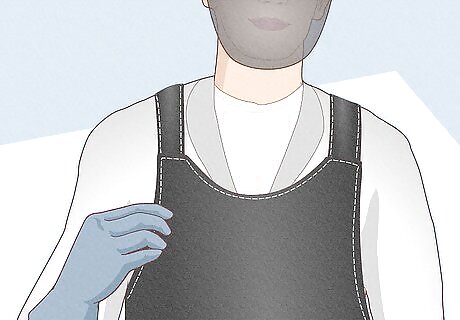
Put on safety gear, including gloves and a fireproof apron. Choose a pair of sturdy, heatproof gloves, and make sure the fireproof apron covers your whole body. Wear thick sleeves, pants that cover your exposed skin, and close-toed shoes. Thermite is very dangerous, so protective gear is essential. Take precautions to prevent your clothing from catching fire. Burning clothing is difficult to remove and can cause severe burns.
Making the Thermite
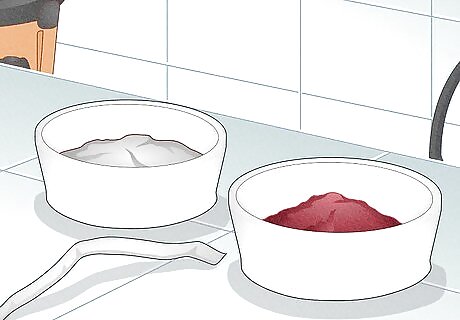
Use powdered iron oxide, aluminum powder, and a strip of magnesium. Choose finely powdered iron oxide so that it reacts easily with the aluminum, forming thermite. Make sure the magnesium strip is very thin so that it burns easily and ignites the material. For a basic thermite experiment, you'll need 3 grams of aluminum powder and 9 grams of iron oxide. Do not try to grind up the metals into powder yourself, as this is dangerous. Buy them in jars from a chemical company or online. Aluminum powder can also be obtained from a paint store or even an Etch-a-Sketch.
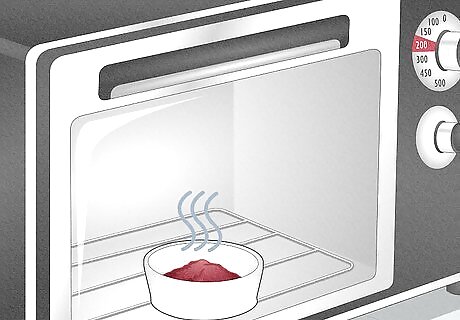
Dry out your iron oxide in an oven or over a Bunsen burner. Set the oven on a medium temperature, such as around 200 °F (93 °C). Heat the iron oxide for 1 hour. If you're using a Bunsen burner, place the iron on an evaporating dish over the flame for 1 hour. Allow the iron oxide to completely cool before you do the experiment. Use caution when using a bunsen burner. The open flame is a fire risk. Never leave it unattended. When you’re finished, make sure the gas supply is shut off completely.
Mix the aluminum powder and iron oxide on a sheet of paper. Add 3 grams of aluminum powder and 9 grams of iron oxide. Swirl the metals together or shake them between 1 piece of paper and another. Continue to blend until they are fully mixed. If you increase the quantity of the metals, stick to a 1:3 ratio (by mass) of aluminum to iron oxide. But don’t work with larger amounts until you’re experienced in working with thermite, since this experiment is very dangerous. Never mix them in a metal container, as this can contaminate the project or cause an unwanted reaction.

Pour the mixture into a ceramic container, such as a clay flower pot. Ceramics are less likely to melt with the heat of the thermite. It's best to place the ceramic container into a second ceramic container, in case the first one shatters from the heat. Do not light thermite on an ice block, as it may cause a dangerous explosion. Ice is not an option for controlling the heat of the flame.
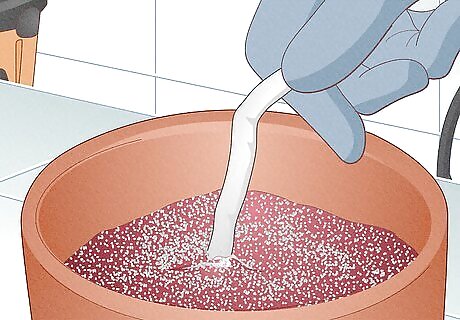
Insert the magnesium strip into the mixture. Make sure that your magnesium strip is at least 6.5 cm (2 inches) long. Use a longer magnesium strip to give yourself time to step back before the thermite ignites.
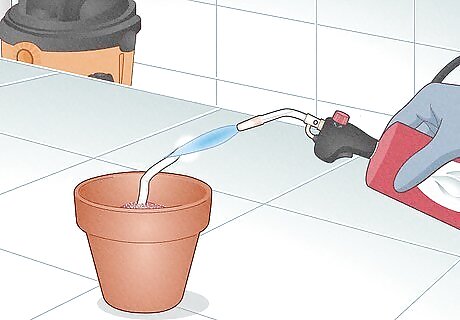
Light the magnesium strip with a propane torch or stick lighter. Stand at least 4 meters (13 feet) away from the thermite to watch the reaction. Use sparklers to light the thermite if you don’t have magnesium available. Keep your safety gear, especially your eye protection, on at all times. Do not use matches to light the magnesium strip (or sparkler) since matches could drop burning material into the thermite, causing it to ignite while you are standing next to it.
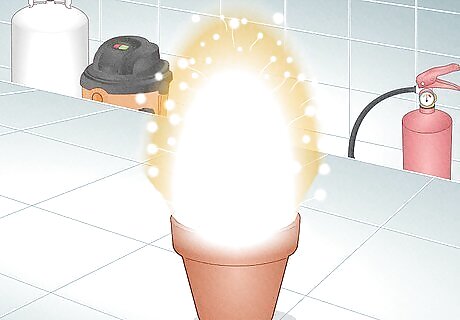
Let the thermite burn out completely. Remember: a thermite reaction is irreversible once it starts. Don’t try to extinguish it using water. This could cause an explosion. Keep a fire extinguisher nearby in case of secondary fires. You cannot use a fire extinguisher to put out the reaction itself, but you can use it to prevent fire from spreading to other areas once the reaction has stopped.



















Comments
0 comment